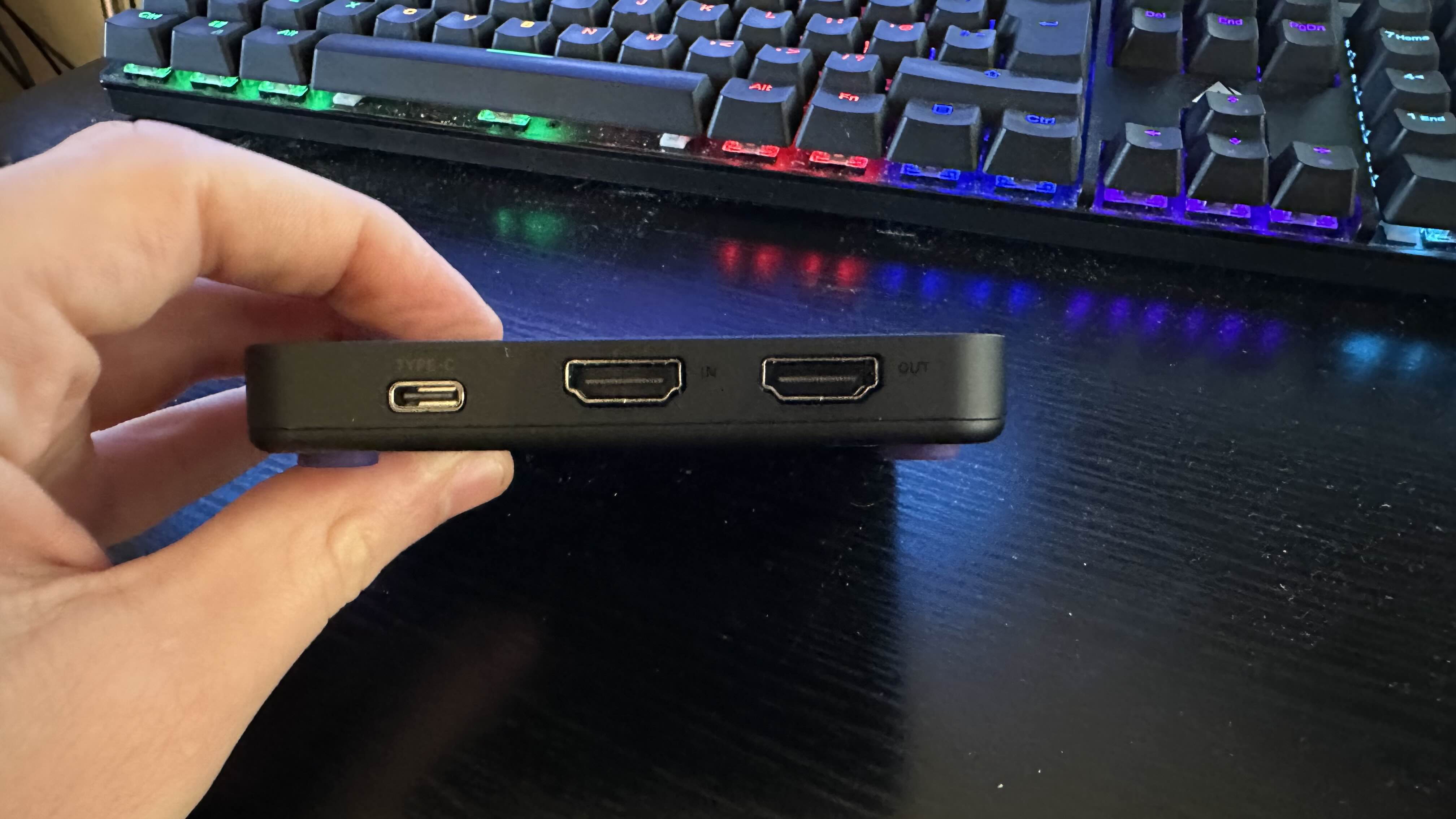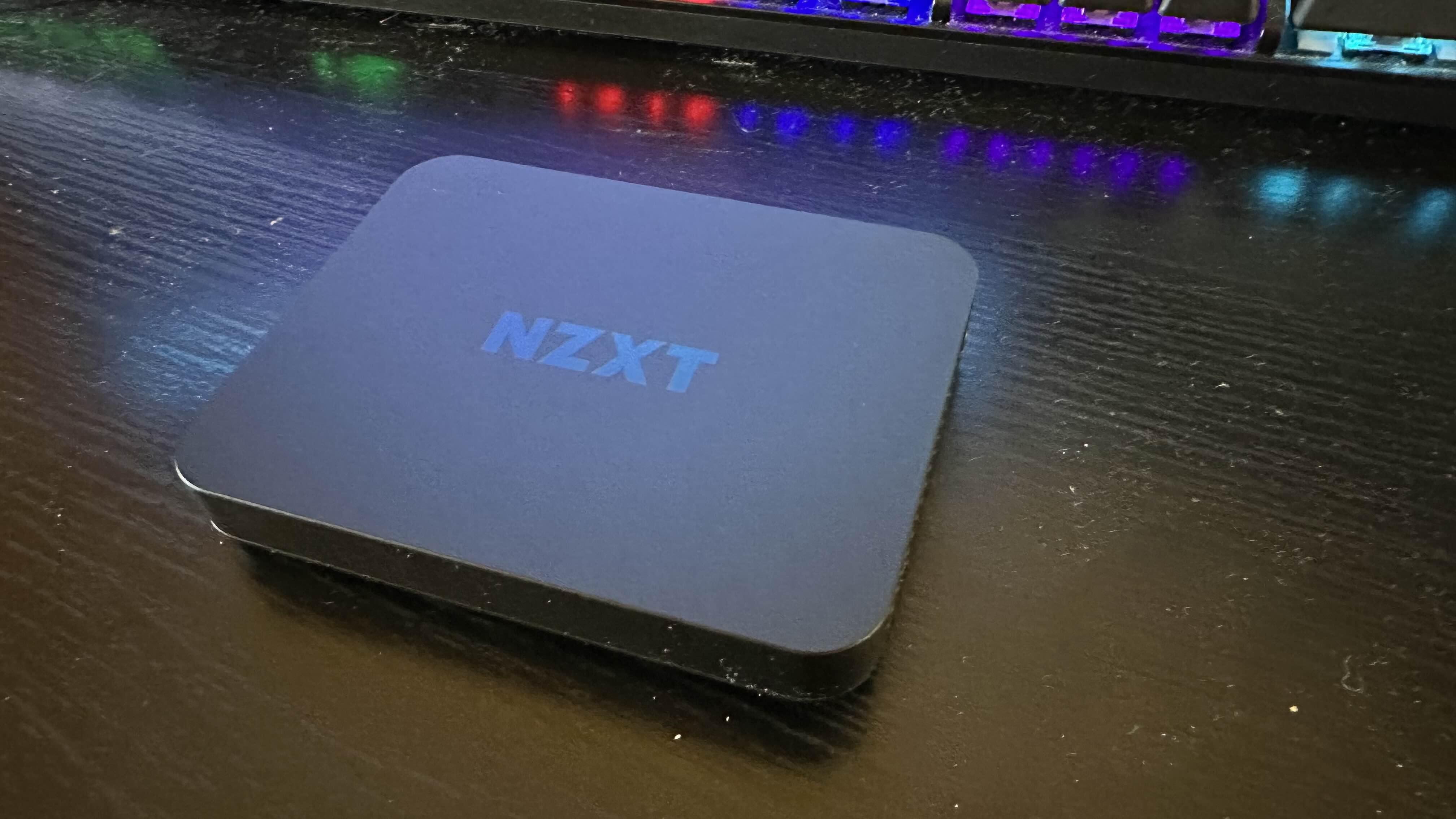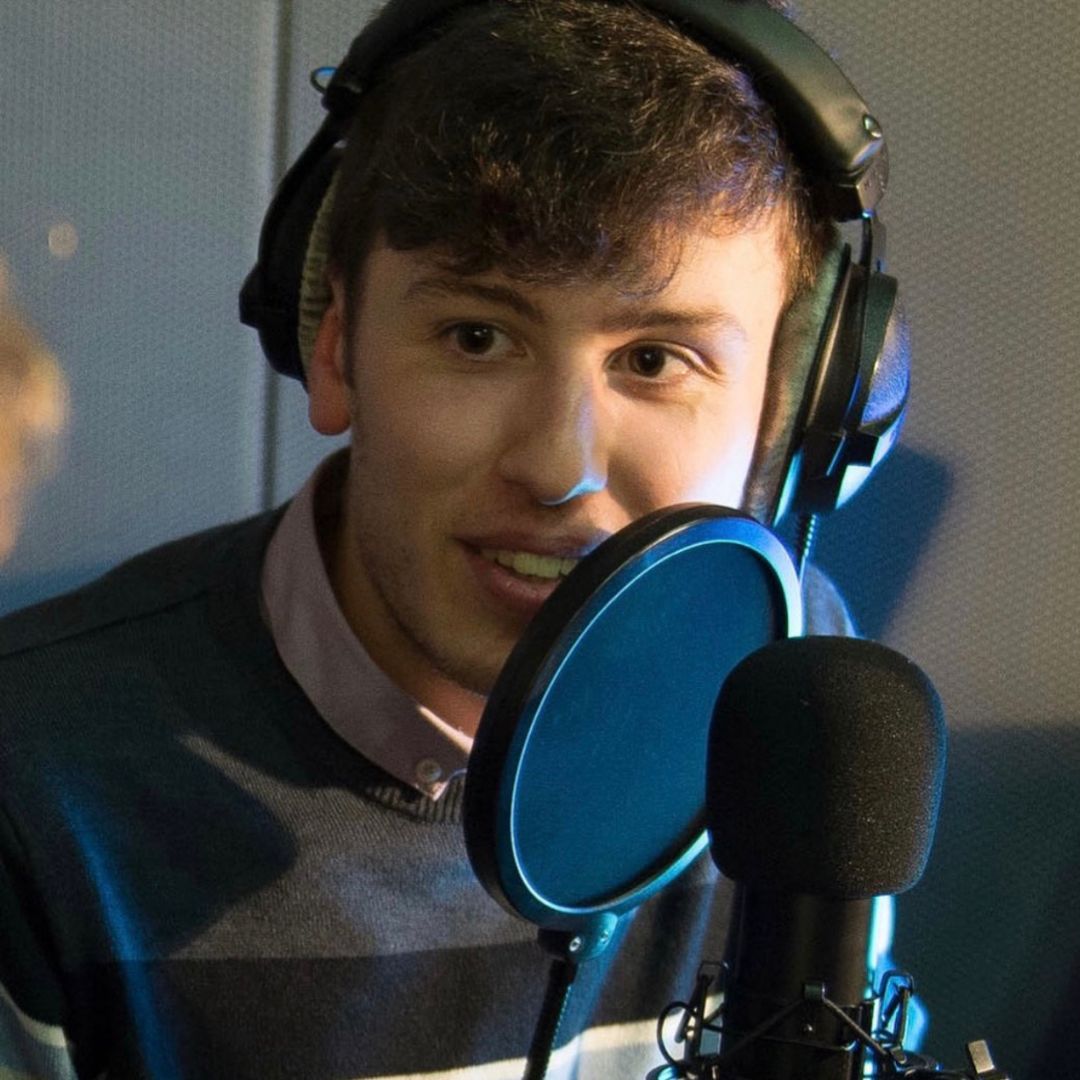GamesRadar+ Verdict
The NZXT Signal HD60 is a fantastic little device (emphasis on little), which manages to deliver on its promises and carves out a fantastic spot in the market as a budget capture card.
Pros
- +
Small and compact
- +
Very reasonable price
- +
Simple setup
- +
Great HDMI passthrough
Cons
- -
Slight issue with audio
- -
No support for MacBook
Why you can trust GamesRadar+
For quite some time now, Elgato has dominated the market when it comes to capture cards and it’s easy to understand why. Reasonable prices mixed with a recognizable brand mean it’s super easy for people to get into streaming and content creation. However, relative newcomer on the block NZXT looks to make a dent in Elgato’s reign with the Signal HD60.
Despite it being a fairly unknown brand in the content creation space, this isn’t a name you should ignore. NZXT makes some hugely popular PC components and prebuilt systems. As a step in a different direction for the brand, the NZXT Signal HD60 isn’t gunning for the top of our best capture card list, but it does make itself an accessible alternative, especially not when you can find it for $99.99/£69.99 or cheaper due to regular discounts.
Advertising 1080p/60fps recording and 4K/60fps latency-free passthrough for streaming, it’s certainly making big promises for such a small price of entry. This makes me intrigued, will it be able to stand alongside and challenge some of the established capture cards from the likes of Elgato and AverMedia?
Design

The NZXT Signal HD60 is pretty much exactly what you would expect from a design point of view; it’s a small black box. In fact, it’s a very small black box. To put it into context, it’s about the thickness of an iPhone 14 Pro Max and about half the height of it too. If I had to use a singular word to describe it I’d probably settle on ‘cute’.
It sports a matte black finish on the plastic casing, with the brand name ‘NZXT’ emblazoned on top. On the rear of the device, you’ll find an HDMI in, HMDI out, and a USB-C port. And that is the extent of it. I am honestly super impressed with just how dinky and compact the Signal HD60 is. Comparing it to Elgato’s HD60 X, a device I’ve had loads of hands-on time with at work, I’d say it’s for all intents and purposes pretty much identical - the only major differences being the edges of the device, the placement of the ports and the brand name on top.
It’s the perfect size and shape to be tucked away behind your console ready for you to capture or steam your gameplay. However, it looks nice enough that if you wanted it on display it would look pretty good somewhere in your setup. However, just be sure to have a micro-fiber cloth nearby as it picks up fingerprints and dust like they are going out of style.
Features

The device works without any specific software and instead is designed to work with the software of your choice, in my case OBS (Open Broadcasting Software). And for the most part, it worked seamlessly once I had set up the relevant scene and settings. This makes it incredibly easy for those streamers who are already familiar with their broadcast settings and don’t have time to fiddle around learning another set.
I am a fan of not having to download any proprietary software, especially when in both our review for the Elgato HD60 X and in my private use with it I found it to create latency between gameplay and what was being captured, so I appreciate NZXT skipping this step altogether - aside from their non-essential NZXT Cam software. The only case I would maybe make for using it would be allowing you to monitor your settings a little easier than you can in OBS, but really you can give it a miss and just use your streaming software of choice.
Performance

NZXT has made it incredibly simple for you to plug in and use the Signal HD60 capture card. It comes with a USB-A to USB-C cable to allow you to plug it into your PC and once you connect it to the HDMI ports of your respective console and monitor, you’re good to go with no annoying installation or software headaches.
Immediately upon adopting the Signal HD60 into my setup, I was greeted with 4K 60fps footage being sent from my PS5 straight into OBS. When streaming a game or recording footage it did so in pretty clear and consistent 1080p and 60fps like advertised. I never noticed any significant delays or lag at all during usage, although I did experience a couple of times where audio didn’t capture quite right. I noted twice during my testing period with the Signal HD60 that audio was not picked up, however, this was quickly fixed by deactivating the source in OBS and then reactivating it. It’s worth noting though that this never occurred during streaming or when I was capturing footage, purely when I was testing the device offline.
Throughout testing I used both my PlayStation 5 and my Xbox Series S to capture footage from The Last Of Us Part 1, WWE 2K24, and Uncharted: The Nathan Drake Collection. On Xbox, I played Forza Horizon 5 and Star Wars Outlaws. As I have mentioned I experienced zero latency as promised and the image quality via passthrough was spot on, so I have no complaints in that regard across all of the games I tested.
I was disappointed to discover that it doesn’t work with my MacBook Pro, as this would have been an incredibly useful addition for me. It would have allowed me to capture footage without having to move my consoles over to my desk and vice versa. While admittedly my MacBook would have performed worse than my PC in all honesty, it would have been a nice quality-of-life bonus for a relatively affordable device.
Should you buy the NZXT Signal HD60?

The NZXT Signal HD60 is a pretty impressive little capture card that has served me well throughout my usage with it, aside from two small hiccups with audio and it not being compatible with my MacBook, it worked seamlessly with my setup.
I mentioned earlier that I normally use the Elgato HD60 X for my work, but I am tempted to switch it out and use the NZXT Signal HD60 instead going forward. For streaming on Twitch, that device does a great job, but its higher price for the 4K, 30fps capture it’s capable of can sometimes feel surplus to requirements when Twitch can only handle 1080p. Cards like the AverMedia Live Gamer Ultra 2.1 offer a lot more in terms of features and futureproofing, but they’re not going to be justified for the majority of content creators.
That said, at the end of the day, I don’t believe people will see much difference between Elgato and NZXT’s competing capture cards aside from price and because of that, I would have to recommend NZXT’s offering over the industry staple instead. There is the newer, and affordable Elgato Game Capture Neo, but we’re yet to test that out, and NZXT’s Signal manages to cut through the noise of proprietary software annoyances. Certainly against the HD60X, you’re saving upwards of $80/£90, so it’s hard to deny that this is a great deal for a very similar product.
How we tested the NZXT Signal HD60
I used the NZXT Signal HD60 for a few weeks for both streaming live gameplay and capturing footage to later use in edited videos. I tested it using both my PS5 and my Xbox Series S consoles and had them hooked up to my PC and monitor.
For more of the best gear for streaming, check out the best microphones for streaming and gaming, and the best webcams.
For as long as I can remember, I've had a fascination with video games and technology. From a young age, I was always reading up on the latest tech and begging my parents to buy it for me - now I have my own job and make my own money, I realize why they often had to say no to my requests. For that reason, I love trying to find the best value gear so I can recommend it when asked. I studied Journalism at Edinburgh Napier University and throughout my time there gaming was one of my main focuses. Alongside Duncan Robertson, I was the co-host of NerdCulture, a weekly gaming and nerdy news radio show. My time as Studio Manager for the uni radio station meant tinkering with a lot of technology to ensure each broadcast worked smoothly. Elsewhere, you can find me discussing professional wrestling as Cultaholic's Community and Social Media Manager, and you'll also see me on the occasional Twitch stream.




